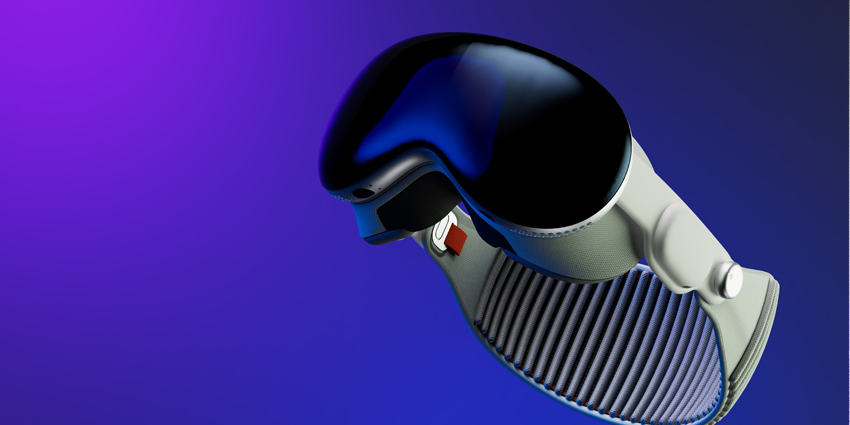Many newcomers to the extended reality (XR) landscape are asking the question, “What is Augmented Reality?” The answer to this is simple: it’s all around us, literally and figuratively.
Truthfully, it’s the most widely-used form of XR, with virtual and mixed reality coming in second and third, respectively. Simply put, AR allows its users to supply digital overlays of data, creative content, or holographic images with unlimited potential. This can include images, animations, text, and documents.
According to a Market Research report, the global AR market is set to top $88.4 billion USD by 2026. The market is set to surpass this after Qualcomm revealed its Snapdragon AR2 platform. This will provide the smart glasses market with a bespoke, lightweight, and snappy processing platform.
Industry verticals worldwide leverage AR to complete incredible tasks such as remote guidance, education, surgery, collaboration, and entertainment. Here’s more on what it can do.
What is Augmented Reality, Really?
AR and applications designed for it provide sensory information to users with spatially-anchored data. Data linked to specific positions in the physical world come to life with AR technologies.
For example, devices with global positioning systems (GPS) can place navigational directions in your field of view (FoV), either with smart glasses or smart windshields. Google, Apple, and other map programmes offer this functionality to users.
Smart glass manufacturers and solution providers like Vuzix, Google, Nreal, RealWear, Lenovo, Magic Leap, and others offer full-spectrum devices capable of agile use cases. Many carry bespoke mobile device management (MDM) and customisable platforms for multiple uses.
AR’s Humble Origins
Inventors actually created the first immersive device called the Sword of Damocles, which was AR rather than VR. Technologies later improved from the 60s, when AR devices required enormous hardware components. Today’s AR devices no longer resemble something in an automotive shop, but rather a device on a bedside desk.
People are now finding AR embedded in many devices. For example, most people can tap the technology with their smartphones to play Pokemon Go, which launched in 2016, or Izumi World in 2022.
In the military, fighter jets can now train with AR technologies from Red 6 against virtual combatants rather than live-fire exercises. This dramatically increases safety for pilots while saving on combustibles and firepower for training exercises.
In 2009, the MIT Media Lab group launched SixthSense, the world’s first wearable gesture interface to overlay digital information on the real world. Google also revealed the world’s first smart glasses, Google Glass, in 2013. Despite the project’s limited success, it paved the way for a host of fresh innovations.
How Does AR Work?
What is augmented reality, and how does it apply to today’s modern-day solutions? To date, the most significant components of an AR device are:
Sensors
AR systems need to quickly relay precise information about the real world. Sensors, cameras, gyroscopes, and other components facilitate this. This real-world data is sent to platforms, apps, and other smart technology for processing and is sometimes enhanced with artificial intelligence (AI).
AR Software
AR software is the platform delivery system, consisting of apps, tools, and software developer kits (SDKs). People find it easier to create their own solutions due to SDKs like Apple’s ARKit, Google’s ARCore, and Qualcomm’s Snapdragon Spaces, among others. Other platforms from RealWear, Trimble, and Lenovo’s ThinkReality suite provide these for enterprise users for unrivalled flexibility.
Central Processing Unit (CPU)
To know what AR is, arguably the leader of XR computing power is Qualcomm, the company behind the cutting-edge Snapdragon AR2 platform. It divides processing power via three components: a CPU, a graphics processing unit (GPU), and AI chip for enhanced visualisations.
The system, combined with Qualcomm’s Snapdragon 8 Gen 1+ and other devices, provides immense upgrades for smart glasses. For example, this includes tethering capabilities with minimal latency, major battery and form factor boosts, and 40 percent more processing power than previous generations.
Lenses and Waveguides
AR and other XR devices are shifting to lens and imaging technologies to augment the real world. Additional head-worn form factors provide either updated pancake lenses or stronger, clearer lens manufacturing techniques for prescription lenses. Luxexcel is a major market leader in this vertical.
New experimental form factors from companies like Mojo Vision aim to create a long-term ‘vision’ of contact lenses with AR capabilities. The innovative company aims to shrink smart glass form factors to contact lens sizes, offering unprecedented AR overlays.
Artificial Intelligence (AI)
AI is a critical component for most AR-powered solutions. The technology is used for natural language processing for voice commands and translations. Also, it can offer foveated rendering for many high-end devices to manage pixels in a field of view. Most devices use AI for hand and eye tracking programmes to navigate their interfaces and interact with real-time 3D (RT3D) content.
Also, CORTEXR and others are creating analytics tracking plugins for AR devices. This enables firms and researchers to track user attention to learn how users interact with specific objects.
What Can You Do with AR?
Over the years, companies have begun leveraging AR to empower workforces, future and prospective hires, and collaborators on metaverse platforms. Also, firms can also connect with consumers for AR product views and communicate in real time with experts to repair equipment and inspect facilities.
AR has pivoted from its initial entertainment focus to a massive market for enterprise and retail environments. Aside from collaboration and remote guidance, some of the largest use cases include:
Entertainment and Events
More companies are turning to AR to engage users with large-scale immersive experiences. Firms like STYLY have created massive AR demos for events across New York City and other global locations.
Trigger XR has also developed numerous AR games and experiences for major blockbuster titles. Jurassic Park, the Marvel Universe, and the National Football League (NFL) have connected with fans with Trigger XR AR technologies.
For augmented art, firms like Tin Drum and the National Portrait Gallery have leveraged AR-powered art. Users can wear Nreal smart glasses for the former and scan QR codes with smartphones on the latter. This enhanced real-world environments with immersive, interactive artwork.
Recently, XR Today visited the BBC Earth’s Green Planet exhibition in central London, where audiences interacted with diverse ecosystems worldwide. Powered by EE’s 5G networks and Factory42’s award-winning AR content, the event taught people about global biodiversity with impressive AR experiences.
Building on the successes of Pokemon Go, AR entertainment also aim to become a staple for future events. Future immersive games will fuel demand for the growing smartphone and smart glasses market.
Customer Experience
Furthermore, AR fashion companies are now leveraging technology to create bespoke clothing product lineups before physically tailoring them. Companies like ARTISANT, DREST, Geenee AR, and L’Oreal are creating AR try-on services to advance shopping experiences for customers and fashion enthusiasts.
Additionally, AR also allows customers to access instruction manuals, receive guided walkthroughs, or even product assembly instructions for furniture and components.
Marketing
Companies and advertisers have turned to AR for developing RT3D assets and experiences for customers. Avataar and NexTech AR have been developing digital assets for clientele to increase engagement and reduce physical goods production.
Furthermore, Spotselfie, Journey, Snap, and others are now guiding industry verticals with their AR expertise to develop next-generation experiences for audiences for similar reasons.
Summary
Those asking “What is augmented reality” can now explore the massive potential of the AR market. Augmented solutions now have the potential to surpass VR in the future with new industry devices.
Global firms large and small realise the utility of AR. These provide workable use cases for XR across industry verticals and device platforms. The future is endless with today’s groundbreaking solutions.







